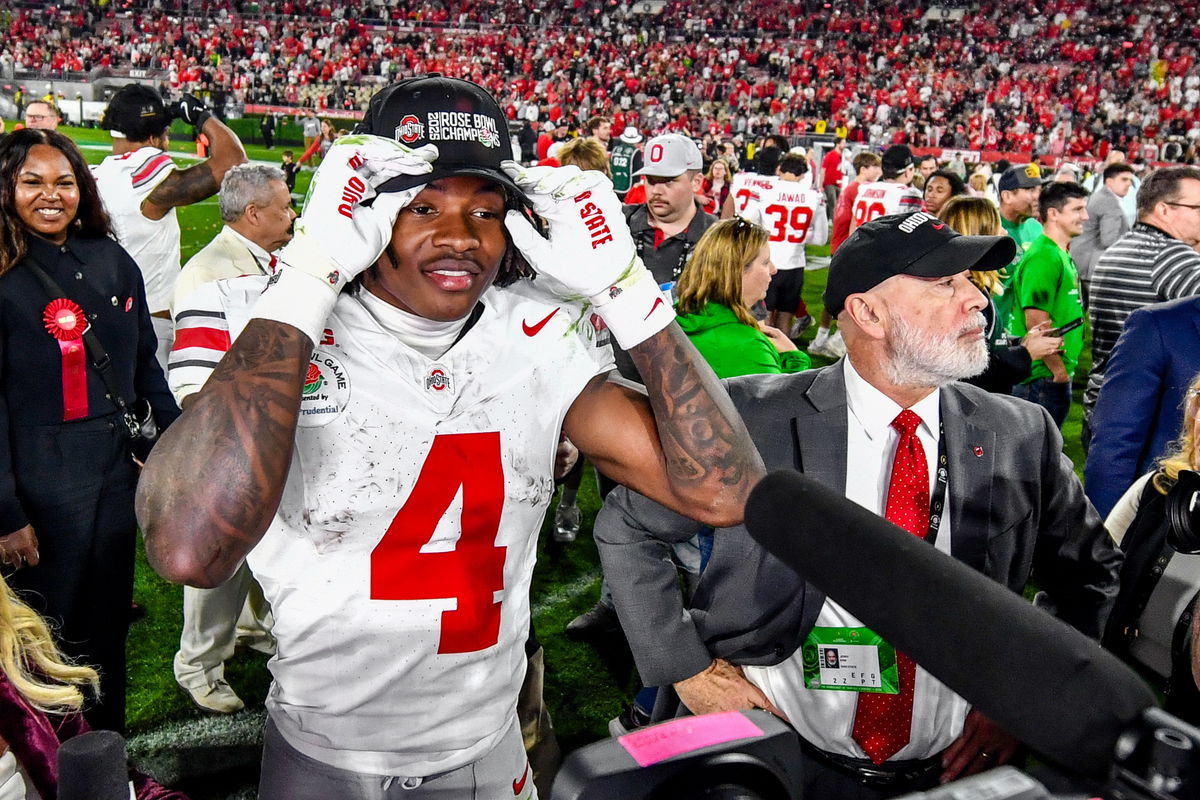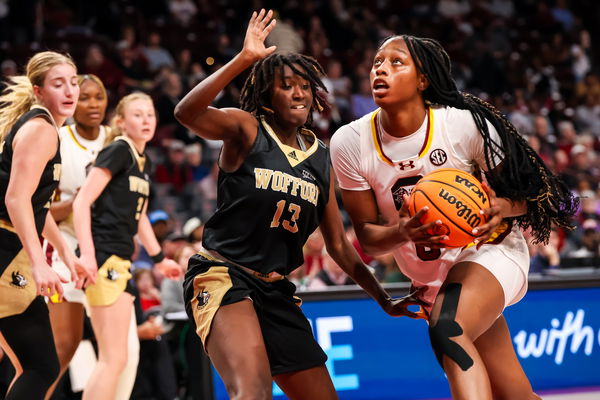
Imago
NCAA, College League, USA Football 2025: Rose Bowl CFP Quarterfinal Ohio State vs Oregon JAN 01 January 1, 2025 Pasadena, CA.Ohio State Buckeyes wide receiver Jeremiah Smith 4 on the field after the CFP QuarterFinal at the Rose Bowl Game between the Ohio State Buckeyes and the Oregon Ducks January 01, 2025 in Pasadena, California..Mandatory Photo Credit: Louis Lopez/Cal Media/Sipa USA Credit Image: Louis Lopez/Cal Sport Media/Sipa USA Pasadena Ca United States of America NOxUSExINxGERMANY PUBLICATIONxINxALGxARGxAUTxBRNxBRAxCANxCHIxCHNxCOLxECUxEGYxGRExINDxIRIxIRQxISRxJORxKUWxLIBxLBAxMLTxMEXxMARxOMAxPERxQATxKSAxSUIxSYRxTUNxTURxUAExUKxVENxYEMxONLY Copyright: xCalxSportxMediax Editorial use only

Imago
NCAA, College League, USA Football 2025: Rose Bowl CFP Quarterfinal Ohio State vs Oregon JAN 01 January 1, 2025 Pasadena, CA.Ohio State Buckeyes wide receiver Jeremiah Smith 4 on the field after the CFP QuarterFinal at the Rose Bowl Game between the Ohio State Buckeyes and the Oregon Ducks January 01, 2025 in Pasadena, California..Mandatory Photo Credit: Louis Lopez/Cal Media/Sipa USA Credit Image: Louis Lopez/Cal Sport Media/Sipa USA Pasadena Ca United States of America NOxUSExINxGERMANY PUBLICATIONxINxALGxARGxAUTxBRNxBRAxCANxCHIxCHNxCOLxECUxEGYxGRExINDxIRIxIRQxISRxJORxKUWxLIBxLBAxMLTxMEXxMARxOMAxPERxQATxKSAxSUIxSYRxTUNxTURxUAExUKxVENxYEMxONLY Copyright: xCalxSportxMediax Editorial use only
The system, designed to funnel billions into schools, offered no similar financial opportunities to the very players driving those revenues. But that’s finally changing. Now, Black Division I athletes have a chance to claim up to $280,000—but the clock is ticking. Attorney Patrick Bradford is working hard to ensure these athletes seize this once-in-a-lifetime opportunity. With the January 31, 2025, deadline fast approaching, eligible athletes must act quickly before this chance slips away.
Watch What’s Trending Now!
A landmark ruling on Name, Image, and Likeness (NIL) compensation is opening the door for athletes, particularly Black athletes, who have historically been under-compensated despite their major contributions to NCAA profits. Under this settlement, Division I football and basketball players from 2016 to 2024 can file claims for compensation, with potential payouts reaching as high as $280,000.
Bradford, a prominent anti-trust attorney, is making it his mission to spread awareness about this critical opportunity.
ADVERTISEMENT
“This settlement revolves around NIL, and Division I athletes must submit their claims by January 31, 2025,” Bradford explained. “The final settlement hearing is set for April, but between now and then, there’s a lot to be done. Athletes must register their claim forms—either online or via paper—before the deadline.”

ADVERTISEMENT
A major concern for Bradford is ensuring Black athletes are informed, as outreach to Black media outlets has been limited. “This isn’t just about one school or one athlete. It’s about making sure every eligible player receives what they’re owed. That means getting the message out to communities that may have been overlooked.”
ADVERTISEMENT
This settlement is no small payout. The NCAA is expected to distribute millions, with the average payout estimated at $91,000. However, top earners could receive as much as $280,000—a long-overdue financial acknowledgment of the billions these athletes have helped generate.
Why black athletes need to act now and how they can benefit from NIL
While this ruling allows athletes to profit from their name, image, and likeness, this particular settlement carries even greater significance for Black athletes. Historically, Black athletes have faced barriers to financial opportunities and exposure despite playing an essential role in the NCAA’s success.
ADVERTISEMENT
This settlement is a chance for them to finally claim a share of the massive profits they’ve helped generate. In 2023 alone, the NCAA brought in $1.3 billion in revenue, largely thanks to football and basketball programs—sports in which Black athletes make up a significant share of the talent pool. Yet, despite their contributions, they have historically been excluded from financial rewards. This compensation is a crucial step toward addressing that injustice.
Bradford’s firm has been particularly vocal about ensuring every eligible athlete files a claim. “It’s unacceptable that Black athletes have been underrepresented in the notification process,” Bradford said. “We’re working nonstop to make sure every eligible player knows how to submit a claim and get their fair share.”
Filing a claim is simple. Athletes need either their NCAA Eligibility Center ID or a claim number. However, if that information isn’t available, they can still file a claim by entering “Unknown” in the required fields.
ADVERTISEMENT
For Black Division I athletes who competed between 2016 and 2024, this is a rare opportunity to receive compensation for their hard work and contributions. As Bradford stresses, time is running out—and missing this deadline means missing out on what’s rightfully yours.
With the January 31, 2025, deadline approaching fast, athletes must act now to secure their share of this historic NIL payout. The clock is ticking, but there’s still time—don’t let this opportunity slip away.
ADVERTISEMENT
ADVERTISEMENT
ADVERTISEMENT

